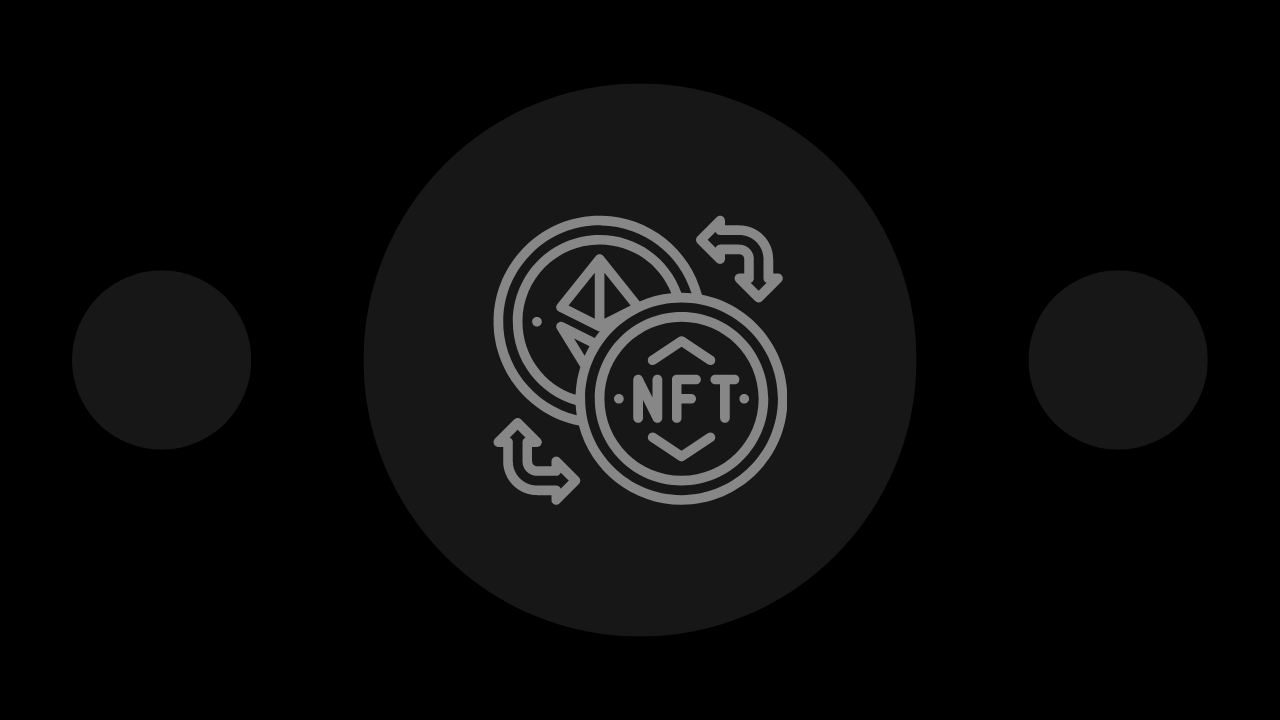Non-fungible Token (NFT) Use Cases: The Definitive Guide
An in-depth guide to existing and potential NFT use cases across various industries, complete with explanations and useful pointers.
An in-depth guide to non-fungible tokens (NFTs), complete with explanations and useful pointers.
Written by Dapperito Team

Non-fungible tokens (NFTs) have taken the digital world by storm, revolutionizing the way we think about ownership and value in the digital realm. At their core, NFTs are unique digital assets that represent ownership or proof of authenticity of a specific item or piece of content, typically using blockchain technology.
The concept of NFTs emerged in the mid-2010s, with projects like Colored Coins and Counterparty experimenting with blockchain-based assets. However, NFTs gained mainstream attention in 2017 with the launch of CryptoKitties, a blockchain game that allowed users to buy, sell, and breed digital cats.
NFTs rely on blockchain technology, primarily the Ethereum network, to ensure the uniqueness and immutability of each token. This technology provides a decentralized and transparent way to verify ownership and transfer digital assets.
NFTs operate on blockchain networks using specific token standards. The most common standard is ERC-721, which ensures each token is unique and non-interchangeable. Another popular standard is ERC-1155, which allows for the creation of both fungible and non-fungible tokens within a single smart contract.
The process of creating an NFT, known as minting, involves uploading the digital asset to a blockchain network and creating a smart contract that defines its properties and ownership. This smart contract contains metadata about the asset, including its description, creator information, and any additional attributes.
NFTs have found applications across various domains:
Several platforms have emerged to facilitate the buying, selling, and trading of NFTs. Popular marketplaces include OpenSea, Rarible, and Nifty Gateway. These platforms differ in terms of features, fees, and the types of NFTs they support.
To use these marketplaces, users typically need to connect a cryptocurrency wallet, such as MetaMask, and have some cryptocurrency (usually Ethereum) to pay for transactions and gas fees.
NFTs have opened up new opportunities for artists and creators to monetize their work directly. Many platforms allow creators to earn royalties on secondary sales, providing ongoing income as their NFTs change hands.
However, the NFT space has also raised questions about intellectual property rights and authenticity. While NFTs can prove ownership of a token, they don’t necessarily confer copyright or usage rights to the underlying content.
The value of NFTs can be highly subjective and volatile. Factors affecting an NFT’s value may include the creator’s reputation, the item’s rarity, historical significance, and market demand.
Some investors view NFTs as a new asset class, while others warn of a speculative bubble. As with any investment, it’s crucial to understand the risks and conduct thorough research before participating in the NFT market.
Most NFTs are built on the Ethereum blockchain, but other networks like Flow and Binance Smart Chain are also gaining traction.
One of the main challenges facing Non-fungible Tokens (NFTs) is scalability, as high transaction volumes can lead to network congestion and increased gas fees.
Interoperability between different blockchain networks and NFT platforms remains a challenge, although projects are working on solutions to allow for seamless transfer of NFTs across ecosystems.
The energy consumption of blockchain networks, particularly those using proof-of-work consensus mechanisms has raised environmental concerns. Critics argue that the carbon footprint of NFT transactions is unsustainable.
In response, some platforms are exploring more eco-friendly alternatives, such as proof-of-stake networks or layer-2 scaling solutions that reduce energy consumption.
The regulatory framework for Non-fungible Tokens (NFTs) is still evolving. Key issues include tax implications, as many jurisdictions are still determining how to classify and tax NFT transactions.
Copyright and trademark concerns have also arisen, particularly regarding the unauthorized tokenization of copyrighted works.
Non-fungible Tokens (NFTs) are disrupting traditional industries in numerous ways.
In the art world, they’re challenging established norms of ownership and provenance. In gaming, NFTs are enabling true ownership of in-game assets and cross-game interoperability.
The fashion industry is exploring digital clothing and accessories as Non-fungible Tokens (NFTs), while real estate markets are considering tokenization of property rights.
The NFT space has faced several criticisms, including concerns about market manipulation, plagiarism, and the potential for a market bubble.
Issues of accessibility and inclusivity have also been raised, as the technical and financial barriers to entry can be high for some creators and collectors.
The future of NFTs holds exciting possibilities.
Emerging NFT use cases include identity verification, certification of academic credentials, and integration with decentralized finance (DeFi) protocols.
As the technology matures, we may see Non-fungible Tokens (NFTs) play a significant role in the broader Web3 ecosystem.
For those interested in exploring NFTs, the first steps include setting up a cryptocurrency wallet, purchasing some cryptocurrency (usually Ethereum), and familiarizing oneself with NFT marketplaces.
Whether buying or creating Non-fungible Tokens (NFTs), it’s important to understand the associated costs, risks, and best practices for security and authenticity verification.
In conclusion, NFTs represent a paradigm shift in how we conceive of digital ownership and value. While the technology is still in its early stages and faces challenges, its potential to reshape various industries and create new forms of digital interaction is undeniable.
As with any emerging technology, it’s crucial to approach Non-fungible Tokens (NFTs) with both excitement and caution, staying informed about developments in this rapidly evolving space.
Other articles from our collection that you might want to read next.
An in-depth guide to existing and potential NFT use cases across various industries, complete with explanations and useful pointers.
An in-depth guide to various NFT categories that you should be aware of, complete with explanations and useful pointers.
Custodial vs Non-Custodial NFTs: Learn the key differences, complete with explanations and useful pointers.
Get curated weekly analysis of major developments, disruptive innovations, and interesting projects in blockchain, crypto, and the metaverse. All in one place, all prepared by experts.